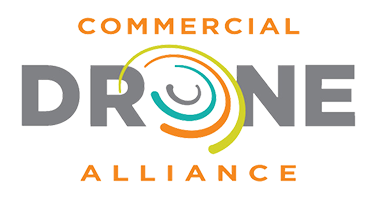CDA and AUVSI Co-Author Op-Ed pushing for BVLOS Rulemaking
Over the past week, in the wake of two devastating hurricanes in the southeast United States, First Responders are leveraging a critical tool: Uncrewed Aircraft Systems (UAS), or drones. Drones are supporting critical response missions including search and rescue, transporting materials, assessing damage to road infrastructure, identifying damaged utilities and restoring power, and providing cell and data communications. UAS are saving lives by keeping response teams out of harm’s way, and enabling informed decisions when every minute counts.
The rapid expansion of drone technology in sectors such as public safety, agriculture, infrastructure inspection, and delivery services has the potential to transform key areas of the economy and provide significant societal benefit, as we have witnessed most recently in the hurricane response efforts. This expansion is also necessary to buttress domestic manufacturing efforts while supporting our national security.
Yet, there is a looming challenge that could slow this progress: the bureaucratic delay in proposing a rule to facilitate Beyond Visual Line of Sight (BVLOS) drone operations. Safely enabling drones to fly beyond the direct visual line of sight of the operator facilitates more complex and cost-effective applications covering a greater distance and reaching a broader community. The success of this budding industry in the United States depends on this proposed rule being issued this year.
Working alongside other industry associations and partners, our organizations — the Association for Uncrewed Vehicle Systems International (AUVSI) and Commercial Drone Alliance (CDA) — have long been at the forefront of shaping U.S. drone policy and regulations. We played a pivotal role in guiding the development of Part 107, which established the foundational framework for commercial drone operations. Today, we find ourselves in a similar position with Part 108, the much-anticipated rule that will enable BVLOS operations. But without swift action to move the Part 108 rule forward, we risk stalling an industry that is poised to bring immense safety, economic and societal benefits to the United States.
The significance of issuing the draft rule this year cannot be overstated. Today, drone operations BVLOS require costly, lengthy, case-by-case FAA approval processes which prevent beneficial operations, as well as inhibit companies from scaling in the United States. This situation is not sustainable. As we have emphasized repeatedly, including during recent Congressional hearings, the industry is therefore anxiously awaiting this draft rule that is intended to implement a March 2022 Aviation Rulemaking Committee report. More than two years later, in the summer of 2024, Congress signed a bipartisan, multi-year Federal Aviation Administration (FAA) Reauthorization bill into law — mandating the FAA to release the BVLOS rulemaking by September 16, 2024, a deadline that has come and gone.
The goalposts keep shifting. Legitimate questions around privacy have been raised. However, the National Telecommunications and Information Administration has already released drone privacy best practices, with the support of industry. The FAA rule is about safety.
FAA leadership has publicly committed to an end of 2024 or early January of 2025 deadline at the latest. This timeline must hold if we want to avoid further delays that could hinder the potential of the drone industry and the many benefits it will bring to the American public. That is because no matter who wins the presidential election in November, on January 20, 2025 there will be a changeover at the White House that will likely result in a moratorium on rulemaking. If the draft BVLOS rule is not published before January 20, it would mean costly delays of many months or even years – hindering the success of this industry.
At this stage, it is the forward movement and issuance of the draft rule that matters most. Key agency officials would do well to remember that at this stage in the process for the draft rule, perfect should not be the enemy of the good. It is just a draft rule. Once the draft is published, there will still be a lengthy process of review and refinement before arriving at a final rule, but we cannot get there until we take this crucial first step.
As per normal practice, the FAA will have a year, if not more, to revise and perfect the rule after its release of the draft. During that time, it will be vital for industry stakeholders to continue providing feedback, data, and insights to ensure the rule is as robust and effective as possible. The collective voice of the industry, working in tandem with the FAA, will be critical to achieving a rule that balances safety with innovation.
The drone industry is standing on the precipice of a new era. With the right regulatory framework, the U.S. can lead the world in drone innovation and integration. The timely issuance of a draft BVLOS rule will unlock the scalability of high-value operations, such as drone deliveries, agricultural monitoring, infrastructure inspection, and public safety operations, including the expanding use of drones as first responders and in disaster response. According to various studies, the drone industry is projected to contribute billions of dollars to the U.S. economy over the next decade. But, without the BVLOS rule in place, much of this potential will remain untapped.
The time to act is now. We call on federal agencies including the DOT and FAA, as well as the White House, to stay on course and deliver the draft BVLOS rule by the end of the year. The future of the drone industry in the United States—and the countless benefits it can bring—depends on timely action.
Michael Robbins is President and CEO of the Association for Uncrewed Vehicle Systems International (AUVSI). Lisa Ellman is Executive Director of the Commercial Drone Alliance.
It's Past Time to Move Drone Rulemaking Forward - Inside Unmanned Systems
